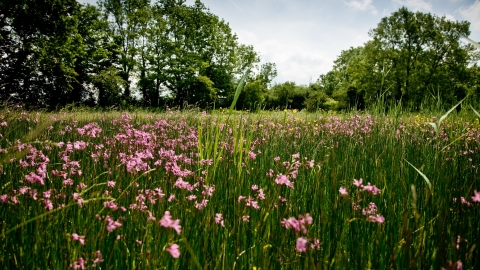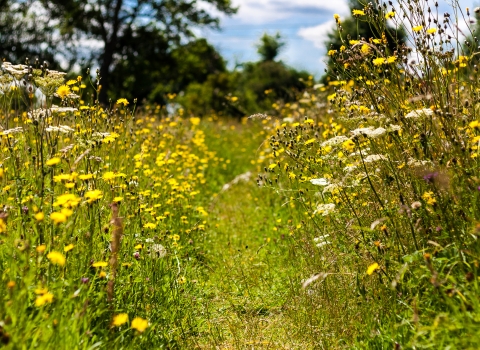
Feckenham Wylde Moor by Paul Lane
Feckenham Wylde Moor
Know before you go
Dogs
When to visit
Opening times
Dawn to duskBest time to visit
All year roundAbout the reserve
The clays of Feckenham Wylde Moor support a surface layer of fen peat, an uncommon Worcestershire habitat that gives the pools their dark velvety hue. The land here was drained in 1850 for agriculture but the drainage system became blocked in more recent times and the restoration of the wetland has begun. The Trust has excavated a large pool along with several smaller scrapes for dragonflies and other wildlife.
As well as a circular trail that covers most of the reserve, visitors can enjoy the views from two hides. Little grebes, kingfishers, frogs, toads, swans and an amazing array of dragonflies and damselflies are regularly seen here. 17 species of the latter have been recorded here including large red-eye damselflies, hawkers, chasers and emperor dragonflies.
The wet grasslands have a rough hay crop removed in late summer and are then grazed by cattle for several months. This ensures that nutrients are removed that would otherwise build up and reduce the extent and number of plants and associated wildlife which require these impoverished conditions. The moist conditions allow ragged robin, common spotted orchid, cowslip and lady’s smock to thrive and lucky visitors may spot common snipe exploring the wet meadows. Reed buntings can be spotted among the reed beds and the mixed hedgerows provide food and shelter for other birds and small mammals.
Feckenham village was once a significant site on the ancient Saltway between Alcester and Droitwich. It’s listed in the Domesday Book as ‘fecceham’ (Fecca’s Ham is a clearing by a stream or enclosure/homestead) and once stood in the middle of the ancient Royal Forest of Feckenham which covered much of the county. The Forest reduced in size and by the 16th century what was left reverted to common land.


